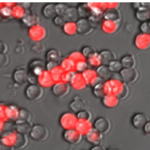Pure cardiac muscle cells, ready to transplant into a patient affected by heart disease.
That’s a goal for many cardiology researchers working with stem cells. Having a pure population of cardiac muscle cells is essential for avoiding tumor formation after transplantation, but has been technically challenging.
Researchers at Emory and Georgia Tech have developed a method for Cheap Oakleys purifying cardiac muscle cells from stem cell cultures using molecular beacons.
Molecular beacons are tiny “instruments” that become fluorescent only when they find cells that have turned on certain genes. In this case, they target instructions to make a type of myosin, a protein found in cardiac muscle cells.
Doctors could use purified cardiac muscle cells to heal damaged areas of the heart in patients affected by heart attack and heart failure. In addition, the molecular beacons technique http://www.lependart.com could have broad applications across regenerative medicine, because it could be used with other types of cells produced from stem cell cultures, such as brain cells or insulin-producing islet cells.
The results are published in the journal Circulation.
“Often, we want to generate a particular cell population from stem cells for introduction into patients,” says co-senior author Young-sup Yoon, MD, PhD, professor of medicine (cardiology) and director of stem cell biology at Emory University School of Medicine. “But the desired cells often lack a readily accessible surface marker, or that marker is not specific enough, as is the case for cardiac muscle cells. This technique could allow us to purify almost any type of cell.”





